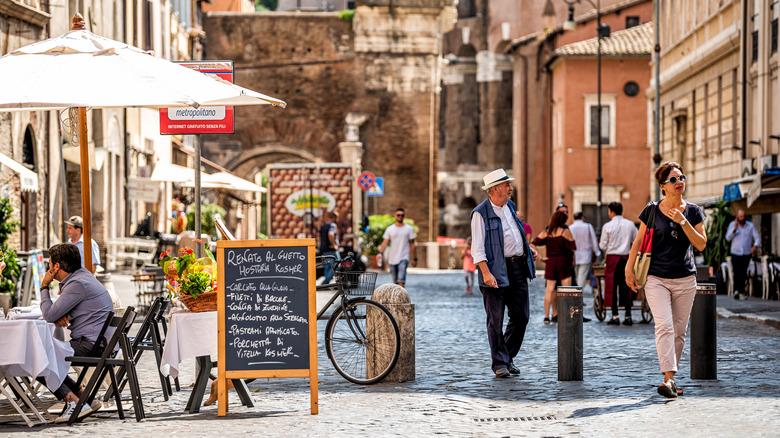Rick Steves Follows 4 Simple Rules When Dining In Europe, And You Should Too
Travel aficionado Rick Steves is no stranger when it comes to Europe's culinary scene. His 12 years on public television, coupled with 24 hand-penned guidebooks on the region, have molded him into an expert on the continent's best dining locales, dishes, and customs. And for our convenience, Steves has distilled decades of culinary wisdom into four basic rules to help novice and seasoned tourists make the most of Europe's delectable flavors.
First and foremost, he insists that visitors steer clear of high-traffic tourist zones. We know you wanted to eat at the tapas bar at the base of Barcelona's Sagrada Família, but trust us — the food isn't nearly as good as the view. Next, Steves encourages tourists order dishes unique to the region to get a true sampling of its culture. It may sound like a no-brainer, but it can be tempting to swing into a fast food joint or order a burger for a taste of home while passing up a hidden, slower-paced cafe. This leads to a less-than-authentic experience, often at a higher price.
The travel expert's third tip is to eat seasonal food that's thriving and abundant during the time you visit. Indulge in fresh truffle pasta in the fall and take advantage of Norweigan berries at the height of summer rather than the other way around. Finally, Steves encourages eating fearlessly — step away from the familiar and the easily pronounceable, and trust local recommendations that push your tastebuds into unknown territories.
Implementing Rick Steves' tips to savor Europe's cuisine
Traveling to eat well is a worthy goal for your European excursion, but it takes a bit of strategy to nail down these four best practices. Here are a few more of Steves' tips for avoiding touristy eateries: Steer clear of restaurants with menus in multiple languages, a telltale sign of a tourist-centric spot; don't be afraid to wander off the over-trodden path; and don't let the "Best-of" lists lure you in with their marketing because the best-kept secrets can often be more satisfying. If you're struggling to find a good fit, ask the staff at your hotel, B&B, or hostel where they eat — they do live there, after all.
To dine regionally, seek set menus. They go by different names, such as the "plat du jour" in France or "menu del dia" in Spain, and offer generously portioned lunch specials at an affordable price. Look along the cobblestone for a fixed menu on a chalkboard, often offering a beverage, appetizer, and main course.
As for seasonal eating, align with nature's calendar by stepping out of the restaurants and entering the marketplaces — bustling hotspots filled with rare fruits, the latest produce, and the freshest meats. And finally, make sure to slow down to savor your Spanish dish or Italian gelato. Many travelers bemoan the European pace, but Rick Steves stresses that slow service is often a sign of good service, especially when the atmosphere is just right.


